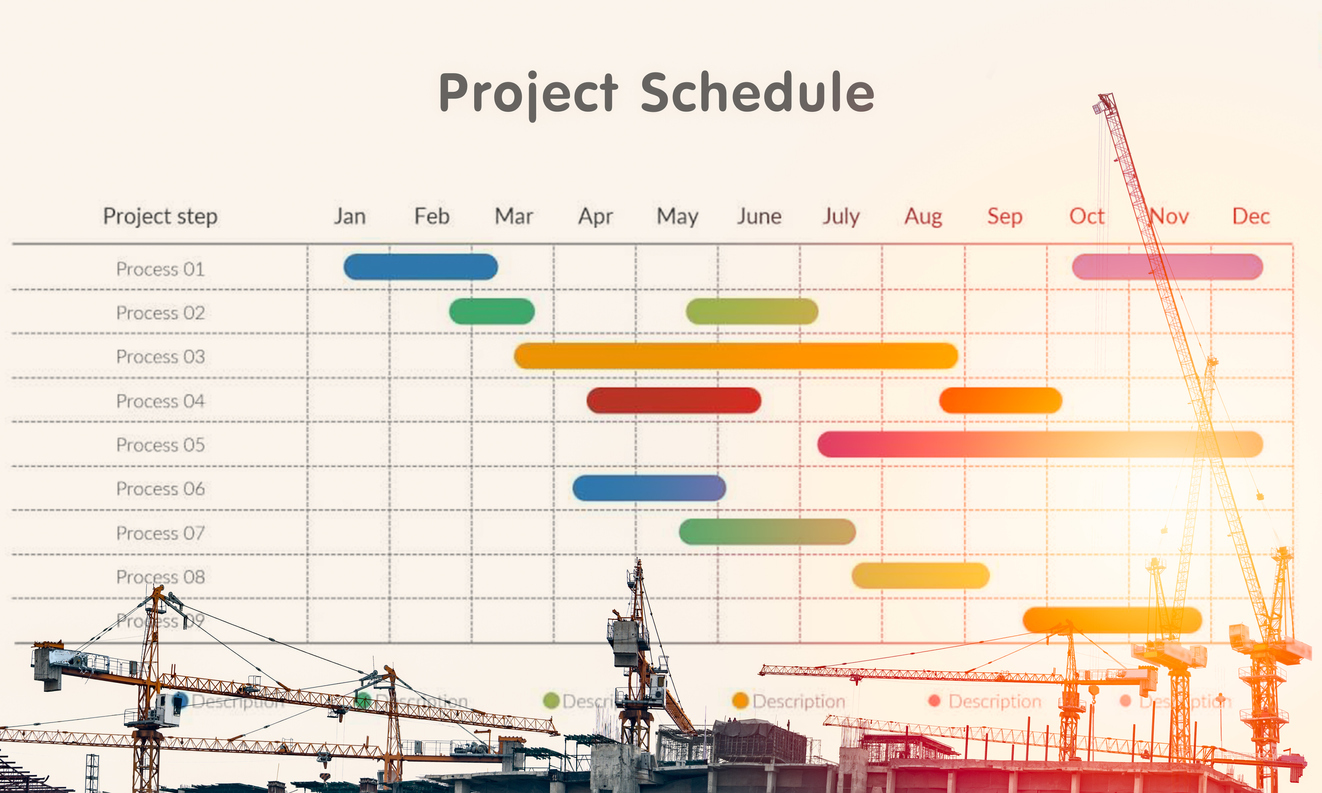
Change orders are a core part of the construction process. They enable owners to realize their vision for a project while ensuring that contractors are compensated appropriately and protected from ill-considered or impractical requests.
However, when the change order process drags out — or worse, when there’s no agreed-upon process to begin with — contractors may perform ad hoc work without approval to keep the project on schedule, taking the risk that they won’t be paid for their efforts. Even if they do stick with the established process, poorly managed change orders can cause long delays as the parties haggle over costs or debate whether the requested change is truly necessary.
Download Viewpoint’s free primer on how to develop a proactive change order management strategy.
Managing change orders well — and anticipating likely causes for change orders in advance — can be the difference between making or losing money on a construction project. If you’re looking to get a handle on change orders and keep your projects on track, this guide has everything you need.

A change order is an agreement to revise the original terms of a construction contract between a project owner and contractor. Change orders often happen when the owner requests a change or addition to the initially agreed-upon scope of work. Change orders may involve renegotiating payment terms — in response to an increase in the cost of materials, for example — or moving back the project’s original scheduled completion date. And contractors might also file a change order request due to a lack of resources or other circumstances, such as changes to local regulations.
Here’s a quick runthrough of a typical change order workflow:
One party initiates a change request.
The other party studies the request for its potential impact on the project.
The receiving party then creates a change order proposal laying out the impact on cost and schedule.
Both sides negotiate to arrive at mutually favorable terms.
Finally, when they arrive at a consensus, they create and sign a change order document with the new terms and conditions, revising the original contract.
There are many ways the change order process can go awry. To make change orders as smooth as possible, construction contracts usually have a clause that answers key questions:
If both parties are not able to come to an agreement on the change order, how is the conflict resolved? Is there another party who will arbitrate the dispute?
How much time can the contractor take to assess the change request and come up with a counter proposal?
How far into the project can a change be requested?
What are the steps that the parties must follow during the change order process?

The complicated nature of construction projects means that change orders can arise from a wide variety of circumstances. Here’s a brief list of some of the most common reasons for change orders:
Scope and design change requests from the owner
Inaccurate or unclear design specifications
Poor budget or schedule planning
Problems procuring materials or services
Funding problems involving the contractor or owner
Issues involving subcontractors
Unexpected site conditions, such as unfavorable soil quality
Acts of nature, like earthquakes or unseasonable weather conditions
Communication problems between contractors, owners and other key parties
New or unknown regulations that impact design, scope, price or schedule
You can plan for some of these hiccups, but others can arise out of nowhere. But whatever the reason for a change request, it’s easier to contain costs and stay on schedule if you have an established, well-documented change order process in advance.

Legal disputes in the construction industry have a massive global cost every year. According to the 2020 Global Construction Disputes Report, the global average value of disputes is over $30 million, with disputes running for 15 months on average.
Download Viewpoint's free primer: Is your next project a goldmine or a money pit?
A well-drafted, comprehensive change order can nip potential conflicts in the bud. Preferably, both parties agree on a change order template before the project kicks off. Let’s look at the details that any change order should include:
Counterparty Identification Details. These include the parties’ names, contact numbers, email addresses and postal addresses.
Site Identification Details. List the site address, dimensions and legal identifiers. If the scope of construction is restricted to a specific block or floor in the site, add that information as well.
Contract Identification Details. Add the original contract number, change request number and the change order number.
Important Names. Include the names of relevant project managers, architects and designers, as well as signatories on both sides. It should be clear who the requesting party is and which party is accepting the request.
Relevant Dates. Include important dates in the change order, such as those for the initial change order request, the creation of the change order, the change order sign-off and when the initial request was received by the counterparty.
Change Details. This section provides a detailed description of what the changes are and why they’re needed. It should include relevant evidence in the form of design drawings, specs and calculations to support the need for these changes at this point of time.
Impact on Schedule and Price. The change order should clearly specify the impact to the schedule, price and payment terms. This data analysis is usually provided by the contractor. In addition to the bottom-line figures, this section should answer questions, such as what additional materials and labor are required, what the revised cost breakdown looks like, and whether the payment schedule should be revised.
Signatures. This final section provides a space for both parties to sign the change order. It contains details like the signatories’ name and title together with the date each party signed.

Handling change orders requires attention to each part of the process. A single error or miscommunication can lead to months of delays and conflict. Use these tips for change order management to keep projects on budget and on time.
The simplest way to head off change order related problems is for the parties to address the issue in the construction contract with direct, detailed provisions that everyone agrees to. It’s far better to tackle this potentially sensitive topic before construction begins than when a change is urgently needed and there’s no process in place to handle it. While negotiations over this part of the contract might be fraught, change requests are likely to arise at some point, and you’ll be prepared with a clearly defined process when they do.
Have you ever thought you were on the same page with someone, only to find out later on that you couldn’t have been more wrong? If only you had something in writing that you could use to support your perspective!
That’s exactly why it’s important to maintain a record of every change order for each project. Whether they come up in a legal dispute or during a discussion with a subcontractor, having the written order prevents miscommunications and keeps everyone on the same page.
Keeping a record of all change orders is also helpful when it comes to analyzing project performance. You can track key data points like how many change orders are created, what proportion get approved, and the average impact on cost and the schedule. This data can be used to identify problem areas (or people) to avoid in the future, offers insights you can use in future projects and creates a meticulous trail for audits.
Discover the benefits of going paperless in construction.
While you can’t anticipate every potential problem, it’s possible to reduce the need for change orders with a detail-oriented, proactive approach. For instance, indirect costs that aren’t accounted for in advance can result in change requests during construction. You can avoid this risk by itemizing costs at a granular level. Drawing on your own experience and that of your team, you can even come up with a formal, standardized checklist that covers different aspects of the project you should carefully evaluate, such as safety, regulations, transportation, design, site parameters, labor, equipment and materials.
One of the biggest challenges in change order management is keeping everyone informed as the project moves forward. Let’s say that a contractor in the field needs to install a different water filtration system because the original system is unavailable. They send a change request to a project manager. The manager then forwards it to the designer to assess its feasibility, while also calculating cost variations and getting a sign-off from the customer. Meanwhile, the field contractor is left in the dark and loses patience. They proceed with the change either on their own or based on a verbal confirmation, which results in a conflict over the scale of the proposed change and delays the project.
A failure to communicate is always a problem, and it can even sink an entire project. It’s important to establish a change order process that works for all parties — and then follow it. It is also helpful to centralize communication and information in a single, easily-accessible place.
While many contractors may want to follow the established change order process, it’s often easier to shortcut the process. They have subcontractors to pay and deadlines to meet, so they can’t afford to wait for a lengthy change order process to finish.
Software that manages construction change orders circumvents this problem by providing all parties with information on requests in real time, streamlining the change order approval process. Software can automatically route the change order to the right person and produce documentation for any future audits.
Change orders discourage frivolous requests and provide a sensible way to adjust to evolving needs. They can also disrupt productivity, delay projects and lead to cost overruns. Construction software smooths the change order process by connecting it to the rest of the construction lifecycle.
A solution like Trimble Construction One makes the change order process simple and transparent, with tools for communicating with owners and other key parties, automating the approval process and real-time information on project progress. Whether you’re in the field or in the office, you can initiate change requests, respond to them and get approvals right from your mobile device. Trimble Construction One acts as a centralized hub for all your construction management needs, integrating your change order process with other key workflows like materials management, accounts payable and more.
To learn how Trimble Construction One can simplify change order management for you, try a free demo today.